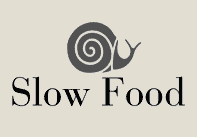
The table looked irritated. “Do you think,” the host had asked, “that you can make a complete menu with flowers?” The echo was a rather loud no. The more experienced guests probably mumbled something about cress blossoms and geranium ice cream. Candied violets were also mentioned, and there was one guest who had already eaten magnolias in wine jelly once and felt downright daring about it. But a flowery menu, no, that sounded richly strange to them all. So, said the master of the house, an amateur chef, next time I will make the kitchen bloom. And to the cheerful amazement of the round, he bit into a plump rose blossom as if in confirmation, eating it with relish: “This really tastes delicious.”
You don’t have to be a flower gourmet to know that outdoor roses are beguilingly fragrant and full of sweetness in taste, too. Rose petals are the creative zing of many a punch bowl. And the colorful blossoms of cress, zucchini and pumpkin delight beyond the decorative by fine spicy, apart sour underlying taste. The flowers of marigold do well in taste with chives or dill; they give a special flavorful effect to a mashed potato. Small pansies can be candied or used to flavor vinegar. Delicious taste baked rose petals with balsamic strawberries.
Gourmets never leave such flowers on the plate. If you spurn them, you’re hurting the cook and you’re an ignoramus or, forgive me, a gastronomic freshman.
Far more unusual than such flowery kitchen pieces is, of course, a meal where flowers are not only a beautiful form, but the content of each course, or at least its main flavor factor. The advertised floral menu began with a salad of hibiscus, lily, pansy and fuchsia flowers with nasturtium and a few dandelion leaves, dressed with a sophisticated vinaigrette of raspberry vinegar and walnut oil. Course number two was a “flower soup” of roses and chrysanthemums. This was followed by the main course: lobster steamed over chamomile and dressed with the flowers. A rose sorbet, followed by a geranium pudding, concluded the meal, which was warmly applauded. Chrysanthemums, said the flower chef with smacking satisfaction, “they taste a bit like cauliflower.” Fuchsias, in turn, would have a very unique aroma, difficult to describe.
By its nature, not every flower is edible and by no means every flower is useful in the kitchen. References to it can be found in botanical literature, and more recently in relevant books on flower cuisine. In the U.S., “Guide to Cooking with Edible Flowers” by Jay and Pamela North has brought fresh scents to many kitchens. The farming couple grows flowers biodynamically in Summerland, California, experimented with them in the kitchen and popularized the new eating option.
Especially tasteful are brought to you flower dishes in the restaurants of our masters. Heinz Winkler is such a top chef with poetry and imagination, who also regularly enriched his cuisine with flowers at the “Residenz” in Aschau near Lake Chiemsee. Once he inspires his guests by a potato soup, which gets aromatic effect and delicate charm by daisies, then he decorates a pigeon carpaccio with begonia flowers or decorates a fish dish with flowers of cress or pumpkin. Delicious tastes a cowslip soup with sa- fran, delicious a scrambled egg with freshly picked lime blossoms. Günter Scherrer once surprised gourmets at the Düseldorf “Victorian” with a truffle dish that was given a distinctive note of delicate sweetness by rose petals. A classic in the kitchen program of Jean-Claude Bourgueil (“Schiffchen” in Düsseldorf”) was a lobster cooked with chamomile flowers. Meanwhile, already standard dishes in kitchens are, for example, baked zucchini flowers, a melon sorbet with scented geraniums, apple jelly with jasmine and such apartnesses. A well-known item from the down-to-earth cuisine is elderflowers, dipped in a thin fritter batter and fried out in hot oil. Fishy gains from flowers of cress or pumpkin. Flowers can be sugared, deep-fried, preserved in jelly, used for seasoning or made into butter with tasteful profit.
Colorful flower butter is decorative and also very easy to make. Take: about 200 grams of butter, softened and made pliable, season to taste with salt and pepper, mix in the desired floral splendor – either chopped or left whole -, give the thing a shape (attractive make themselves rolls) and let the butter for about half an hour in the refrigerator cold and thus become solid. Best suited are the flowers of zucchini, pumpkin and nasturtium. The so to say inlaid butter goes well with crusty toasted white bread, pasta and fish dishes.
As almost natural-born partners, creative patissiers welcome flowers and blossoms into their sweet workshop. Think of such classics as violet ice cream or candied rose petals. In the Zurich confectionery Schober candied and crystallized petals are sold individually or as a fifty gram package.
This is a sign of nostalgia, because violet blossoms have been used in kitchens and bakeries for centuries. In the Middle Ages, crystallized violets lovingly decorated cakes and pies at the courts of princes and abbots. Later, violets, along with tiny silver beads, filled the chocolate spaces of candy kidneys and, in the form of dried flowers, enhanced savory dishes such as meat aspics or, as bold as it was elegant and delicious, a salad of asparagus and beans.
The crowning glory of all risottos, according to cookbook author Diane Seed, is the “Risotto delle Rose,” also called the Lovers’ Supper. The richly flavored creation, sprinkled with shaved cheese, is adorned with four fresh roses that have just bloomed. The dish is said to have been first served at the romantic tête-à-têtes of the eccentric poet Gabriele d’Annunzio with the famous and no less eccentric actress Eleonora Duse, and to have provided considerable erotic stimulation for the couple.
Anyway, the flower kitchen is visually attractive, so eye candy. On top of that, flowers & blossoms, used judiciously, enhance the palate. It does not have to be a geranium pudding or a sugared magnolia in wine jelly at the first flirtation with this magnificent natural cuisine. But how about a sprinkled rose sorbet salad? This is charm with good taste – “fancy cooking”, as the American simplistically calls it.
(FINK Magazine, August f. Winkler)
 ist zertifizierter
ist zertifizierter  BIO-Händler und stolzes
BIO-Händler und stolzes  Slow Food-Mitglied — Tante Emma wäre stolz auf uns!
Slow Food-Mitglied — Tante Emma wäre stolz auf uns!
